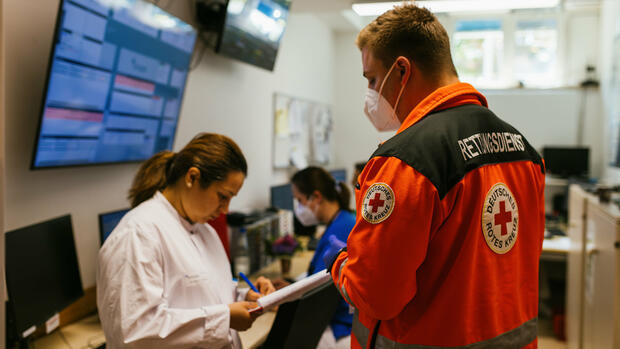Berlin When women suffer from shortness of breath, back pain and cold sweats, very few think of a heart attack. However, these symptoms are typical for them – and much more common than for men.
That should also be the reason why women die from it more often, according to the heart attack register: Doctors recognize the symptoms less well.
Experts speak of the “gender health gap”, which puts women at a disadvantage when it comes to therapies and medication. The problem is apparently widespread, as a still unpublished study by the insurance group Axa now shows.
According to this, a majority of the around 300 general practitioners and internists surveyed are concerned that their patients are being treated incorrectly. Almost everyone agrees that gender plays a role in medical treatment.
However, the problem is hardly known among patients. The Axa study shows that a majority of 78 percent of the Germans surveyed do not believe that they have already received an incorrect diagnosis because of their gender. Only about half know that gender plays a role in medicine at all.
Gender differences hardly known
“The results of the study show that we still have a lot to do with regard to the gender health gap,” said SPD health politician Heike Engelhardt to the Handelsblatt. Inadequate knowledge of gender-specific symptoms is particularly critical in an emergency. And: “Drugs tend to be tried on more men than women before they come onto the market.”
For example, the traffic light coalition reacted at the end of 2022 with a new funding guideline for women’s health and endometriosis in the Research Ministry of five million euros per year. Endometriosis is an abnormal growth on the lining of the uterus that can cause severe pain. According to the Endometriosis Association, there are around two million affected women in Germany. The disease is considered to be little researched.
The chairwoman of the doctors’ union Marburger Bund, Susanne Johna, therefore speaks of an “enormous need to catch up”. Unfortunately, the “gender-specific differences in research played little role for a long time,” she told the Handelsblatt. “That’s why we need more studies that take such differences into account,” she demands. Although they cost more money, they are absolutely necessary in order to do justice to all patients.
Why is there a Gender Health Gap?
For decades, not only were most doctors male, the male body also served as a benchmark in medical research. Gender-specific differences therefore played a subordinate role in medicine for a long time.
The hormone balance in women changes, for example, with the menstrual cycle, which also changes with age, which has an impact on the way medication works. However, these complex relationships have so far hardly been considered in research.
In the first phase of drug testing, almost only males have been used to date. An estimated 80 percent of the test mice are males, and male test subjects also predominantly take part in the first test phase on humans. According to the Association of Research-Based Drug Manufacturers, the proportion of test persons in early clinical trials in the first phase is ten to 40 percent.
Medicines are often mainly tested on men.
(Photo: imago stock&people)
For a long time, women of childbearing age were completely excluded from medical research. In the meantime, however, an appropriate weighting of the different genders in clinical research is required by law.
Gertraud Stadler, professor for gender-sensitive prevention research at the Charité Berlin, sees the problem as far from being solved. “Nobody carries out new studies for drugs that have already been approved,” she points out. “This would require a lot more research, but nobody is doing it.”
What can doctors do?
Ute Seeland, Chairwoman of the German Society for Gender-Specific Medicine, also speaks of a focus on the male body, which is problematic.
“Diseases whose symptoms are described in a certain way in textbooks are not always found in reality,” reports the specialist in internal medicine from practice. She had to develop her knowledge of the influence of gender on medical connections partly on her own.
In most studies, however, data on gender and age are not evaluated separately, she criticizes. Seeland then has to interpret whether the study results apply more to men or women.
Doctors also usually have to adjust the dosage of medication themselves because they are geared towards men. But this is not without risk, because the effectiveness has only been clinically proven for the dosages mentioned in the package insert – using the male prototype.
Gender Health Gap: Also relevant for men?
The experts agree that gender-sensitive medicine would not only help women but also men. “When it comes to the issue of hereditary increased cancer risk, women are relatively aware of breast cancer – men are less aware of the risk,” says Stadler, a gender doctor at the Charité.
Susanne Berrisch-Rahmel also observed a similar phenomenon. She is a cardiologist and gender doctor with a special focus on sports medicine. She noticed that male athletes die from sport-induced sudden cardiac death more often than female athletes. In addition, men who do endurance sports for many years have a higher risk of atrial fibrillation. “We can’t yet say exactly why this is less common in women who do sports,” says Berrisch-Rahmel.
More: The SPD and the Greens are targeting private health insurance companies
